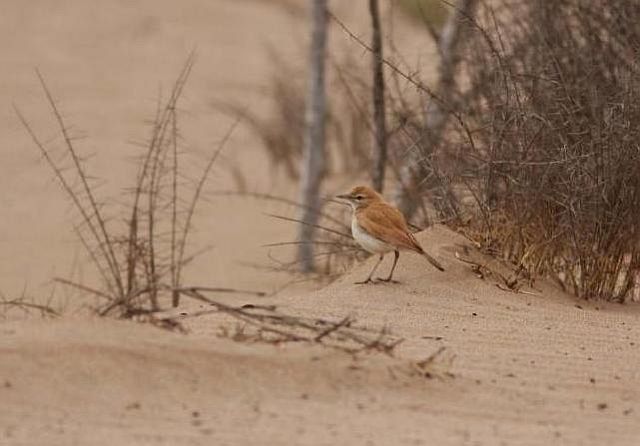503.
Dune Lark Calendulauda erythrochlamys (Duinlewerik)
Order: Passeriformes. Family: Alaudidae
Description
17 cm. A medium-sized lark. Dune Lark always appears long-legged, and is capable of long strides (up to 19 cm) as it runs across hot sand dunes. The unstreaked upperparts are sandy-rufous, closely matching the colour of the dunes, it inhabits. Underparts white with light rufoius streaking. Face plain with whitish eyebrow, dark brown eye-stripe and indistinct brown malar stripe. The flanks and belly appear plain, not streaked.
Similar species: The Dune Lark is closely related to three other lark species endemic to southern Africa. Fortunately the distribution ranges of
these 4 larks are mostly exclusive. Barlow's Lark is a near endemic to Namibia and which occupies a very small range in the Succulent Karoo ecosystem on the coastal plains from near Luderitz to Port Nolloth in South Africa; the Red Lark, also a range restricted species endemic to the red sand dunes of the northern Cape; and the Karoo Lark, endemic to South Africa from the Richtersveld south to the Great and Little Karoo, but which will probably be found to occur in the southern parts of Namibia when this area is more thoroughly investigated. The Dune Lark is the least streaked form with only few small breast streaks and virtually no dark centers to the upperpart feathers. Its malar and moustachial streaks are paler and less defined compared to the other species. Dune Lark's range overlaps with the northern population of Barlow's Lark.
Distribution
Endemic to Namibia's Namib Desert, ranging from the Kuiseb River in the north to the Koichab area near Luderitz in the south. It avoids the totally un-vegetated dunes near the coast in the central Namib dune belt. Most of its range is in the Namib-Naukluft Park.
Habitat
Sparsely vegetated dunes punctuated with shrubs and grasses such as Namib dune bushman grass (
Stipagrostis salbulicola) and ¡Nara melons (
Aconthosicyos horridus).
Diet
It eats a variety of insects and seeds, exposing sand-covered food items by digging with its bill, and catching prey aerially or gleaning from the leaves and bases of grasses. The Dune Lark does not drink water and needs as least 20-30 percent of its diet as invertebrates to metabolise enough water to survive.
Breeding
Monogamous and territorial. The nest is built solely by the female in 7-9 days, consisting of a domed cup built of coarse grass and lined with finer plant material, feathers, hair and reptile skin, often secured together with the webs of burrowing spiders. The domed nest provides shade to the female on nest duty and to her eggs or young. It is typically placed in a depression dug into sand at the base of a shrub or grass tuft, usually facing south-east. This creates the best shade and cooling effect from the prevailing wind. Egg-laying season is year-round, as it opportunistically lays its eggs after rain. It lays 1-2 eggs, which are incubated solely by the female for about 13-14 days. The chicks are brooded by the female for the first 4 days, with both parents feeding invertebrates to the chicks during the roughly 12-14 day long nestling period. They leave before before being able to fly, hiding and skulking in vegetation.
Behaviour
It has a number of interesting behaviour patterns that help it survive in the intense heat and aridity of the Namib sand dunes. It searches for food mainly in the morning and late afternoon, running rapidly over the bare sand between patches of vegetation. The hotter it gets, the longer are the bird's strides. During the heat of the day Dune Larks disappear into the base of large shady grass clumps. They rest within these clumps usually a few cm above the ground to benefit from the cooling effect of any breeze. Temperature measurements in the central Namib show that at 13h00 when the temperature of the sand is over 50° Celsius the lark's resting place is about 33°. The birds thus avoid contact with the hot sand and radiation from the ground and sun and in this way minimize their water loss to evaporative cooling.
Status
Fairly common, localised resident; endemic.
Call
Listen to Bird Call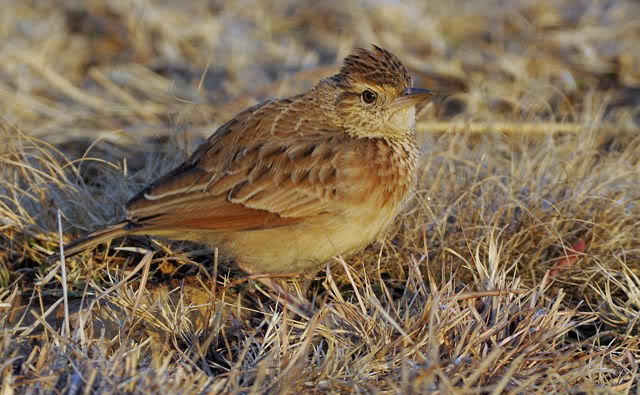



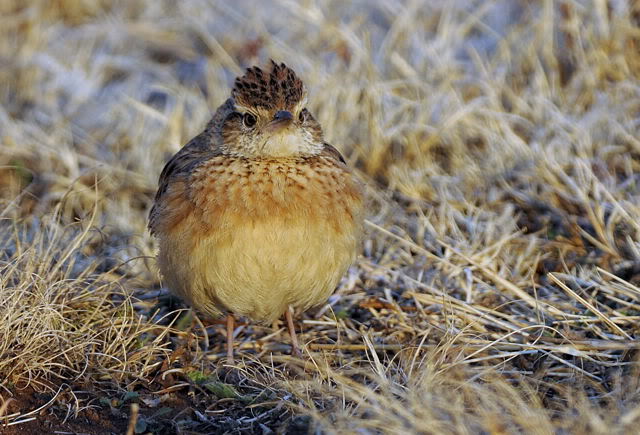
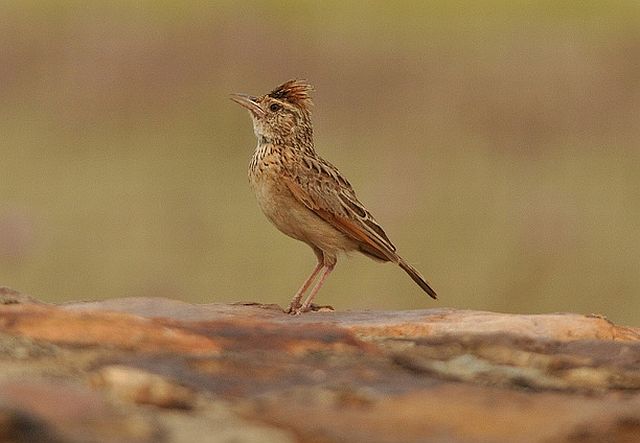 © Joan
© Joan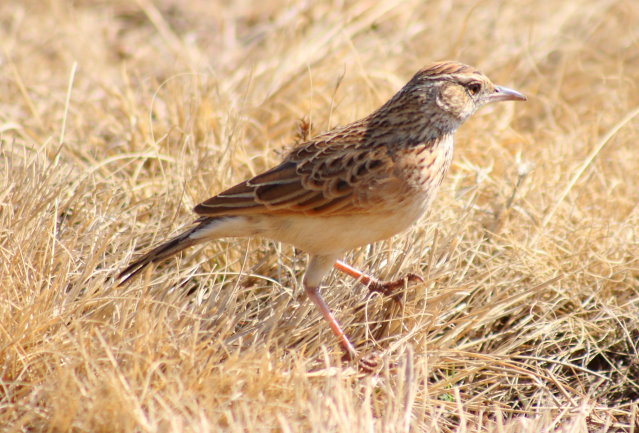 © Flutterby
© Flutterby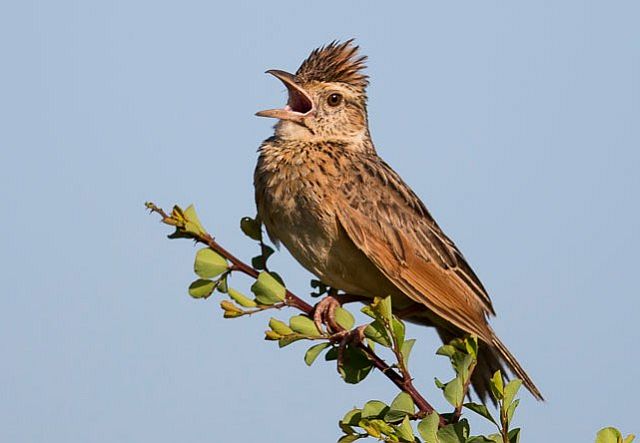 © Pumbaa
© Pumbaa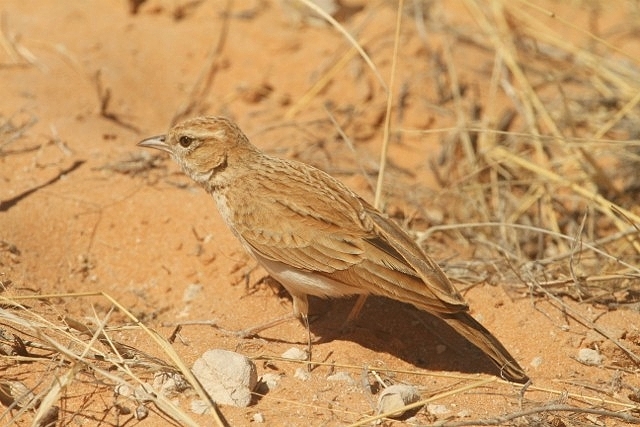
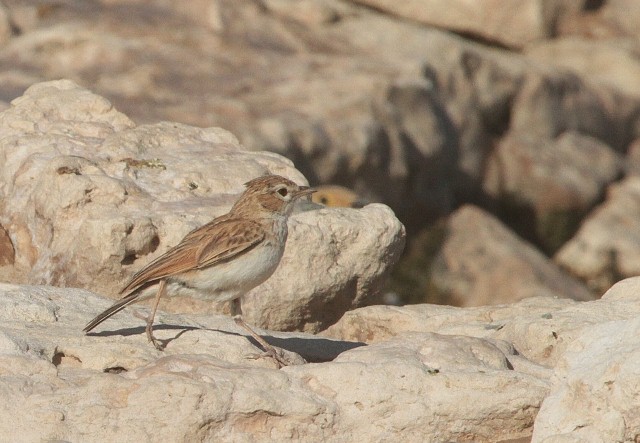
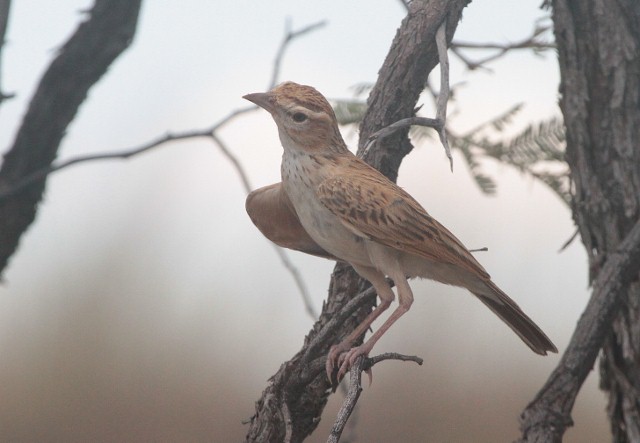
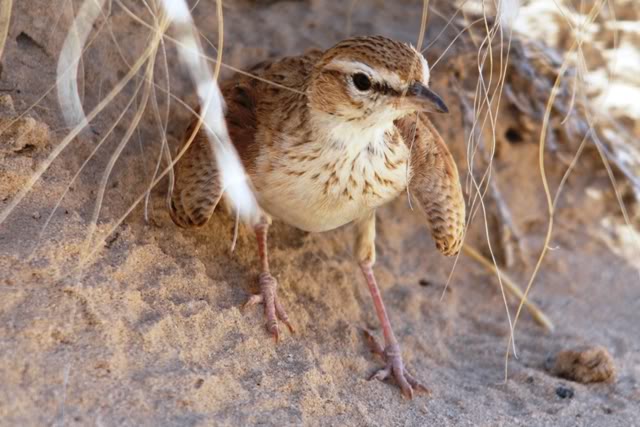 © Mel
© Mel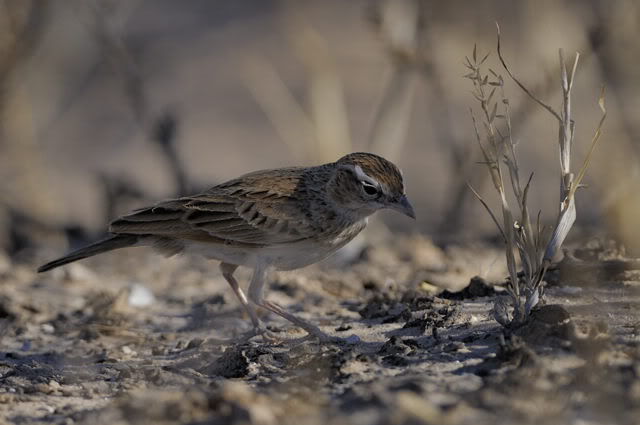 © Dewi
© Dewi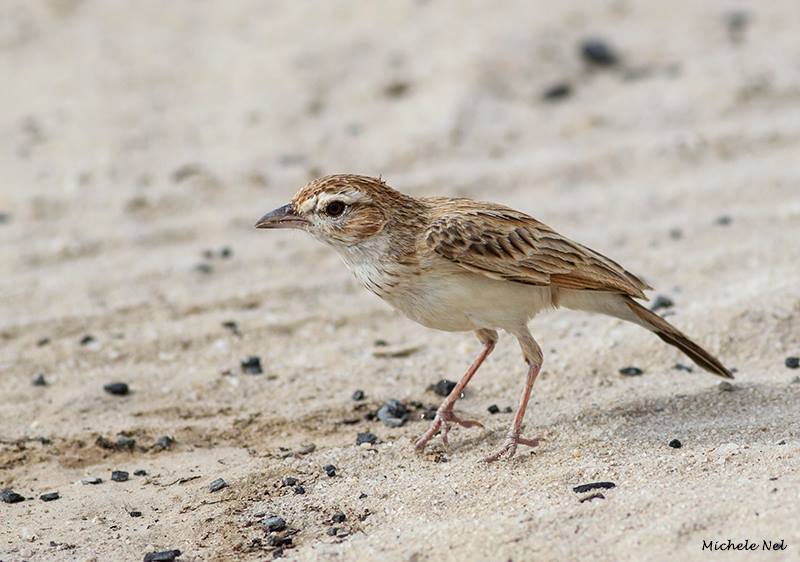 © Michele Nel
© Michele Nel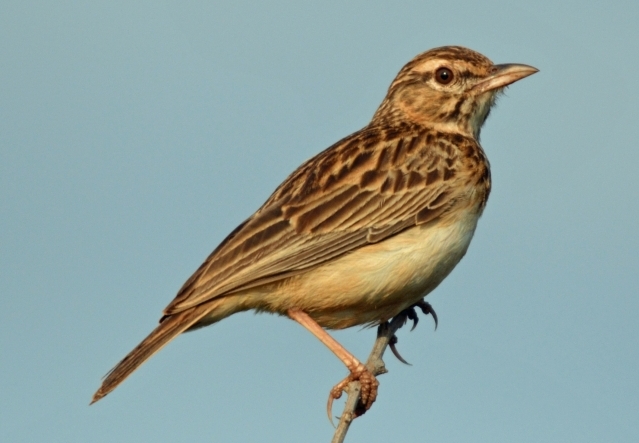 © BluTuna
© BluTuna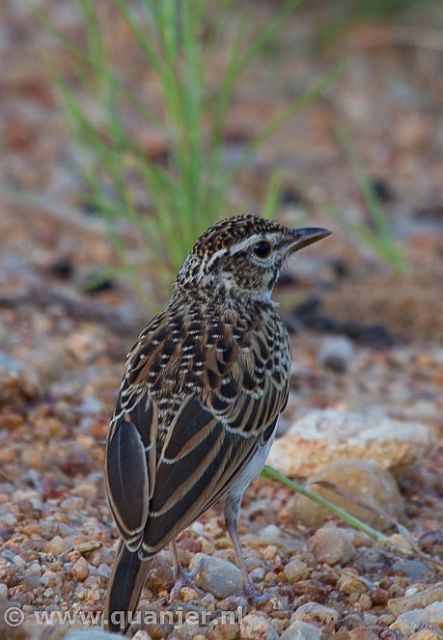 © Guinea Pig
© Guinea Pig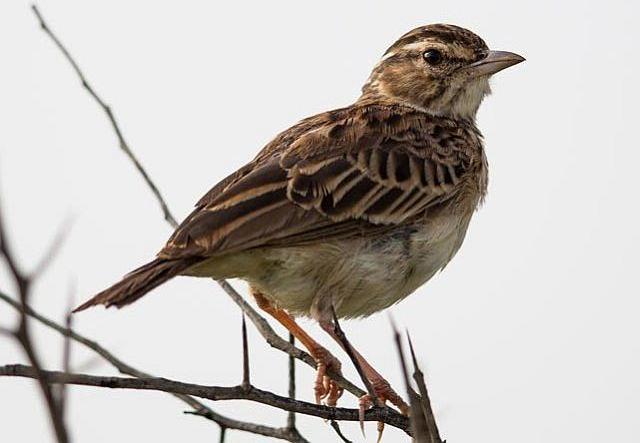 © Pumbaa
© Pumbaa 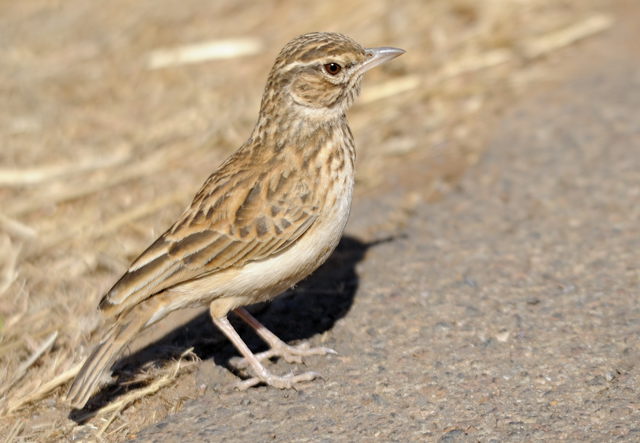 © Dewi
© Dewi